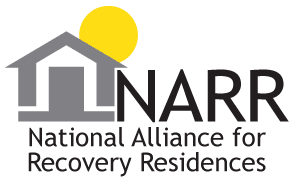MAT for alcohol use disorder is an evidence-based treatment that helps people recover from alcoholism. People who take part in MAT for alcohol use disorder receive prescription medications to help them end their alcohol use. They also participate in therapy sessions to develop the skills that will help them resist relapse and remain in recovery.
What is Medication-Assisted Treatment (MAT)?
Medication-assisted treatment (MAT) is a type of addiction treatment that includes prescription medication and therapy. MAT generally treats people with opioid use disorder (for example, addiction to heroin, prescription painkillers, and other opioids) and alcohol use disorder (the clinical term for alcoholism).
The prescription medications in MAT for alcohol use disorder allow people to end their substance use safely. In addition, these medications help prevent painful or dangerous withdrawal symptoms.
The physical effects of addiction, including drug cravings and withdrawal symptoms, are significant obstacles on a person’s path toward recovery. But the impact of addiction isn’t limited to its effects on a person’s body. To achieve and maintain long-term recovery, people need to make the behavioral changes that will support their continued success.
This is why the therapeutic component of MAT for alcohol use disorder is so important. During therapy, people can gain vital information about addiction and recovery. They can also discuss issues that may have contributed to their substance use, learn to identify and avoid the triggers that undermine their recovery, and develop essential relapse prevention skills.
This dynamic combination of appropriate medication and effective therapy has made MAT a highly effective means of care for people with alcohol addiction.
How Does MAT for Alcohol Use Disorder Work?
As noted in the previous section, MAT for alcohol use disorder works by addressing the physical, psychological, and behavioral aspects of addiction.
When a person begins MAT for alcohol use disorder, the first step is typically a full assessment. This ensures that the treatment professional understands the full scope of the person’s needs, so they can develop the customized plan that will help them achieve successful, long-term recovery.
After the assessment, the provider can recommend the prescription medication and types of therapy that are right for the patient. The healthcare provider can explain the features and benefits of each type of medication and answer any questions the patient may have about the use and effects of the medication.
FDA-approved medications for use in MAT programs for alcohol use disorder include disulfiram, naltrexone, and acamprosate.
Disulfiram
Disulfiram is the generic name of the brand-name medication Antabuse. The general purpose of disulfiram for alcohol use disorder is to make drinking alcohol a decidedly unpleasant experience.
Disulfiram disrupts the body’s ability to metabolize alcohol. When a person who is taking disulfiram drinks alcohol, they experience distressing side effects. Some of these effects include nausea, headache, vomiting, elevated heart rate, and dizziness.
Disulfiram is taken orally, usually once per day.
Naltrexone
Naltrexone interacts with the same receptors in the central nervous system that alcohol affects. When a person takes naltrexone as directed for alcohol use disorder, they will not experience pleasurable effects if they drink alcohol. This is because naltrexone blocks alcohol’s ability to release endorphins, the brain chemicals associated with sedation and euphoria.
Naltrexone often appears under the brand names Vivitrol and Revia. Vivitrol is an extended-release medication that a person takes via monthly injection. Revia is a tablet that a person takes daily.
Acamprosate
When a person uses acamprosate, they can stop drinking without experiencing the intense alcohol cravings that would otherwise occur. Overcoming the urge to use alcohol can be a significant step in a person’s ability to achieve and maintain long-term abstinence from alcohol.
Acamprosate, which has been approved for use in the U.S. since 2004, is marketed under the brand name Campral. People who use acamprosate typically take this medication orally three times per day.
The Risks of MAT for Alcohol Use Disorder
When they are taken as directed, the medications that are incorporated into MAT for alcohol use disorder offer significant benefits. However, as is the case with virtually all medications, using disulfiram, naltrexone, and acamprosate does expose people to certain health risks.
- Potential side effects of disulfiram include headaches, drowsiness, mood changes, stomach pain, and vision problems.
- Possible side effects of naltrexone include nausea, dizziness, disrupted sleep patterns, and diminished appetite.
- The use of acamprosate may cause a person to feel sad, nervous, or irritable. Acamprosate use can also cause fatigue and insomnia.
The potential side effects and other risks of MAT for alcohol use disorder underscore the importance of getting help from a trusted addiction treatment provider. Healthcare professionals work closely with their patients to select the most beneficial medications, monitor side effects, and adjust dosage levels.
Get MAT for Alcohol Use Disorder in Florida
Ambrosia Treatment Center is a trusted source of MAT for alcohol use disorder in South Florida. If you or a loved one can benefit from personalized care in a safe and welcoming environment, we may have the solutions you’ve been seeking. To get the answers you need, visit our admissions page today.






